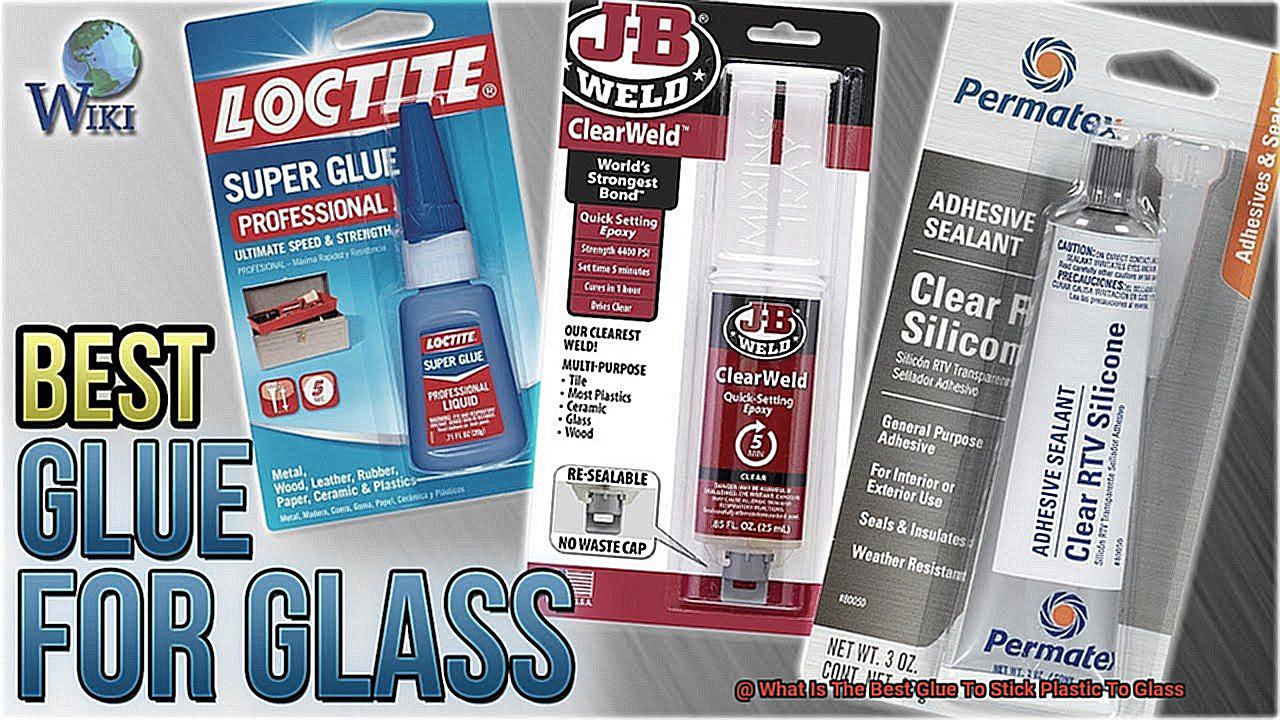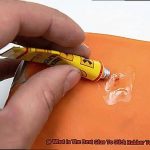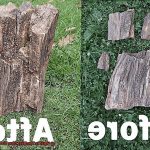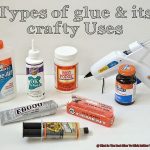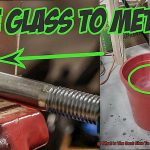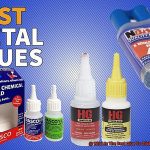Sick of your plastic decor taking a nosedive off your glass vases?
Or maybe you’re knee-deep in a DIY project that demands the perfect union of plastic and glass. No worries, my friend.
I’ve got your back. In this blog post, we’ll unravel the mystery of the best glue to stick plastic to glass.
So let’s jump right in and find that dream glue for your plastic and glass bonding adventures.
Types of Adhesives Used for Bonding Plastic to Glass
Contents
Glue is a seemingly simple substance, but its power to bring different materials together is nothing short of magical. When it comes to bonding plastic to glass, choosing the right adhesive is crucial for a strong and durable bond. In this essay, we will explore the different types of adhesives used for this purpose, including their strengths and limitations.
Epoxy Resin – The Mighty Bond:
Epoxy resin is a superhero adhesive that forms an unmatched bond between plastic and glass. Its superior strength and durability make it resistant to chemicals, moisture, and heat, making it suitable for various applications. By mixing the resin and hardener together, applying it to the surfaces, and allowing it to cure, an unbreakable bond is formed.
Super Glue – Quick and Strong:
Super glue, also known as cyanoacrylate glue, acts like a lightning-fast superhero. It bonds plastic to glass quickly, creating a strong and secure hold. However, it’s important to clean the surfaces before applying it and use it for smaller projects or repairs.
Silicone Adhesive – Flexibility at Its Best:
Silicone adhesive is like a reliable friend that never disappoints. It forms a waterproof and flexible bond between plastic and glass surfaces. With resistance to extreme temperatures and UV radiation, this adhesive is perfect for both indoor and outdoor projects.
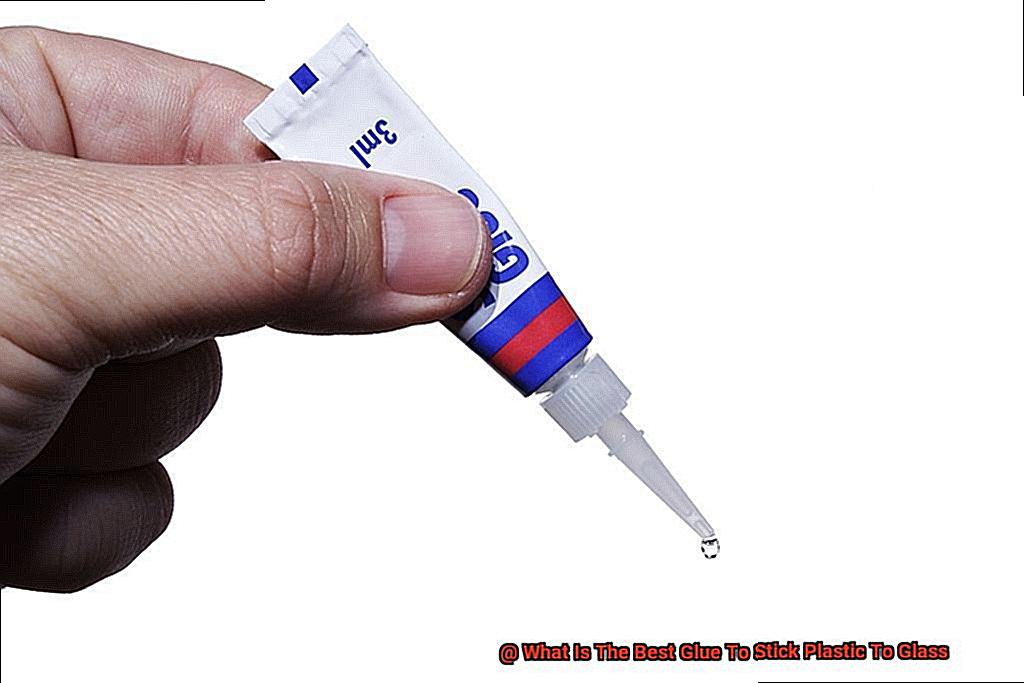
UV-Curing Adhesives – Speedy Bonds:
UV-curing adhesives are like magical potions that instantly bond plastic to glass when exposed to ultraviolet light. These adhesives offer rapid bonding times and high strength, making them ideal for quick projects where time is of the essence.
Acrylic Adhesives – Clarity Matters:
Acrylic adhesives are like invisible wizards that create strong bonds between plastic and glass while maintaining transparency. They are resistant to water and chemicals, making them great for both indoor and outdoor applications.
Conclusion:
Choosing the right adhesive for bonding plastic to glass is crucial for the success of your project. Whether you need strength, flexibility, quick bonding, or transparency, there is a magical adhesive out there for you.
Cyanoacrylate-Based Adhesive
Well, look no further because cyanoacrylate-based adhesive, also known as super glue, is here to save the day.
So, what sets cyanoacrylate-based adhesive apart as the ultimate choice for bonding plastic to glass surfaces? Let’s delve into the details:
- Swift Setting Time: With super glue, waiting around for hours for the bond to form becomes a thing of the past. In just a matter of seconds, it sets, allowing you to swiftly move forward with your project.
- Formidable Bond: Cyanoacrylate-based adhesive creates an unyielding bond that can withstand formidable forces attempting to pull the surfaces apart. Bid farewell to the constant reattachment of your glass decorations.
- Transparent Brilliance: One of the most remarkable aspects of super glue lies in its ability to create an invisible bond. No more unsightly glue marks marring the aesthetics of your project.
Now that we’ve covered the advantages of using cyanoacrylate-based adhesive, let’s delve into how to properly apply it for optimal results:
- Immaculate Surfaces: Before applying the adhesive, ensure both plastic and glass surfaces are spotless, free from any dirt, grease, or moisture. This meticulous preparation guarantees a robust and enduring bond.
- Surface Roughening: For enhanced adhesion, lightly sand or roughen both plastic and glass surfaces before applying the adhesive. This provides the glue with more surface area to bond with, resulting in an even stronger hold.
- Apply and Press: Dab a small amount of super glue onto either the plastic or glass surface (whichever is more convenient for your project). Firmly press the two surfaces together and maintain pressure for a brief period. Exercise caution to avoid getting the glue on your skin, as it bonds instantaneously.
And there you have it. By following these simple steps, you can achieve a vigorous and invisible bond between plastic and glass surfaces using cyanoacrylate-based adhesive. Whether you’re undertaking a DIY project or repairing a cherished glass item, super glue is your go-to adhesive.
Epoxy Adhesive
Look no further than epoxy adhesive. This superhero of adhesives is the ultimate choice for bonding plastic to glass.
Epoxy adhesive is a combination of two components: a resin and a hardener. When these two components are mixed together, they undergo a chemical reaction that forms a bond that is not only strong but also durable. Say goodbye to flimsy bonds and hello to reliability.
One of the greatest advantages of epoxy adhesive is its high bonding strength. Whether you’re repairing a broken plastic or glass item or creating a DIY masterpiece, epoxy adhesive ensures that your project stays intact for years to come.
Versatility is another superpower of epoxy adhesive. It can be used on a wide range of plastics, such as acrylic, polycarbonate, and PVC. Not to mention, it’s compatible with various types of glass like tempered glass and borosilicate glass. With epoxy adhesive, you have the freedom to explore endless possibilities in your crafting adventures.
But wait, there’s more. Epoxy adhesive is resistant to chemicals and moisture. Once cured, it forms a waterproof seal that protects your bond from water or other liquids. So if you’re working on a project that involves liquids or requires moisture resistance, epoxy adhesive is the way to go.
However, like every superhero, epoxy adhesive does have its kryptonite. It may not work as well on certain types of plastic or glass. Plastics like polyethylene and polypropylene have low surface energy, making it challenging for epoxy adhesives to form a strong bond. Similarly, some types of glass may have coatings or treatments that can affect the adhesion properties of epoxy adhesive.
To unleash the full potential of epoxy adhesive, follow the manufacturer’s instructions carefully. Properly prepare the surfaces to be bonded, mix the resin and hardener in the correct proportions, and allow sufficient curing time. Trust me, it’s worth it for a bond that won’t let you down.
Clear Silicone Adhesive
Clear silicone adhesive is a versatile and powerful tool for bonding plastic to glass. Its transparent nature sets it apart from other glues, as it dries completely clear, leaving no visible color or residue. This makes it perfect for projects where aesthetics are key, ensuring a seamless and inconspicuous bond.
Flexibility is another key feature of clear silicone adhesive. When bonding plastic to glass, the materials can expand and contract at different rates. But fear not. The flexible nature of this adhesive allows it to accommodate these differences, keeping your bond strong and durable over time. No more brittle connections that crumble with the slightest touch.
But wait, there’s more. Clear silicone adhesive also boasts exceptional adhesion properties. It forms a reliable bond that can brave the elements, including temperature changes, moisture, and even UV exposure. This means you can confidently use it for both indoor and outdoor projects without worrying about it losing its grip.
To achieve the best results with clear silicone adhesive, proper surface preparation is crucial. Cleanliness is key. Ensure that both the plastic and glass surfaces are free from dirt, grease, or any other contaminants that could interfere with the bonding process. A quick wipe down with a mild detergent or rubbing alcohol should do the trick.
Applying clear silicone adhesive is a breeze. Simply dispense it from a tube or cartridge using a caulking gun or similar tool. Apply an even layer onto one of the surfaces, depending on your project requirements. Then press the two surfaces firmly together to create a secure bond. Easy peasy.
After bonding plastic to glass with clear silicone adhesive, be patient and allow sufficient curing time. The exact time can vary depending on factors such as temperature and humidity, so it’s important to follow the manufacturer’s instructions. Remember, good things come to those who wait.
Specialized Adhesives for Polyethylene and Polypropylene
Look no further. In this article, we’ll delve into the world of specialized adhesives designed specifically for these plastics. Prepare to be amazed as we uncover the secrets to successful bonding and reveal the wonders of surface preparation. So grab a cup of coffee, sit back, and let’s dive into the adhesive options available.
Polyolefin Adhesives:
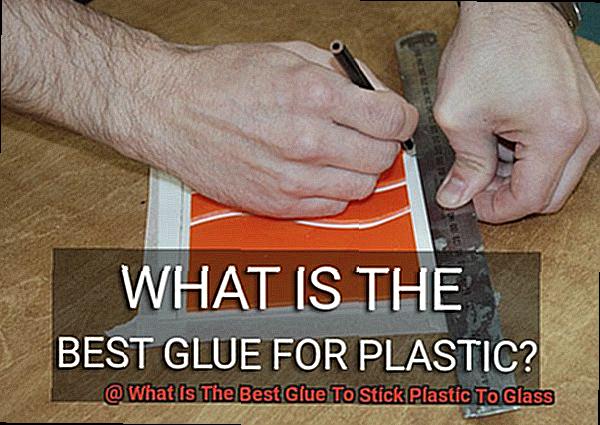
Let’s start with the superhero of specialized adhesives – polyolefin adhesives. These remarkable adhesives are formulated with additives that enhance their bonding capabilities with polyethylene and polypropylene. They work their magic by chemically reacting with the plastic surface, creating an unbreakable intermolecular bond. Thanks to their low viscosity, they effortlessly penetrate the plastic surface, ensuring a bond that will stand the test of time.
Cyanoacrylate Adhesives:
Next up, we have the rockstars of the adhesive world – cyanoacrylate adhesives, better known as super glues. These fast-curing wonders create an instant bond upon contact with the plastic surface. However, not all cyanoacrylates are created equal when it comes to bonding polyethylene and polypropylene. To ensure effective bonding, look for formulations that contain rubber modifiers, which add flexibility and strength to the bond.
Hot Melt Adhesives:
For those in search of versatility, hot melt adhesives are here to save the day. These dynamic adhesives are melted and applied in a molten state, solidifying as they cool down. The result? An exceptional bond with outstanding strength. Widely used in industries such as packaging and manufacturing, hot melt adhesives offer reliability and durability for your bonding needs.
Surface Preparation:
Now that we’ve explored the adhesive options, let’s delve into the crucial realm of surface preparation. To achieve a bond that can withstand anything, it is vital to thoroughly clean and degrease the plastic surface. Any pesky dirt, oils, or contaminants can hinder the adhesive’s effectiveness. Additionally, some adhesives may require the use of primers or surface activators to further enhance bonding. Don’t underestimate the power of properly preparing your surfaces – it’s a small step that makes a huge difference.
Preparing the Surfaces for Bonding
Surface preparation is a crucial step in ensuring a strong and long-lasting adhesive bond between plastic and glass. Without proper preparation, your adhesive bond may be weak and short-lived. So, let’s dive into the secrets of preparing surfaces for bonding, shall we?
First things first, cleanliness is key. Before applying any glue, thoroughly clean the surfaces to remove dirt, dust, and grease. Use a mild detergent or soap with warm water and gently scrub the surfaces with a soft cloth or sponge. Rinse thoroughly and ensure the surfaces are completely dry.
Once the surfaces are squeaky clean, it’s time to roughen things up a bit. This step is crucial for improving adhesion. Use sandpaper or a sanding block with a fine-grit (around 220-320) to lightly sand both the plastic and glass surfaces in a circular motion. The goal is to create a roughened texture that enhances the bond, not to remove material entirely.
After sanding, remove any debris or dust generated during the process. Wipe the surfaces with a clean, lint-free cloth or use compressed air to blow away any remaining particles. Even the tiniest speck can negatively impact your adhesive bond, so thorough cleaning is essential.
Consider using a primer or adhesion promoter specifically designed for bonding plastic to glass. These products work wonders by promoting molecular bonding between the adhesive and surfaces. Follow the manufacturer’s instructions for applying the primer or adhesion promoter, and allow sufficient drying time before moving on.
Temperature and humidity are also important factors to consider during surface preparation. Ensure that both the plastic and glass surfaces are at room temperature before bonding. Extreme temperatures can affect adhesive performance, so it’s best to work in a controlled environment whenever possible.
Applying the Glue
Today, we are delving into the fascinating world of gluing plastic to glass. Whether you are repairing a broken item or embarking on a craft project, the proper application of glue is essential for a robust and long-lasting bond. So, grab your sandpaper and join us as we explore the secrets to successfully applying the glue.
First and foremost, cleanliness is paramount. Imagine yourself as a detective searching for clues – that’s the level of meticulousness required when cleaning the plastic and glass surfaces. Any trace of dirt, dust, or grease can hinder the adhesive properties of the glue. Take a clean cloth and some rubbing alcohol, and thoroughly wipe down those surfaces.
Next, let’s add some texture to our masterpiece. Take your sandpaper or file and gently roughen up the plastic and glass surfaces. By creating tiny grooves, we provide the glue with a solid grip, ensuring a stronger bond.
Now comes the exciting part – selecting the perfect glue for the job. Not all glues are created equal when it comes to bonding plastic to glass. Let’s take a closer look at our top contenders:
- Epoxy glues: These powerhouses are renowned for their exceptional bonding capabilities. Composed of two components that need to be mixed together before application, epoxy glues create a durable and long-lasting bond.
- Cyanoacrylate glues: Also known as super glues, these gems work their magic in mere seconds. With quick-setting properties, they form an almost instantaneous strong bond. Just remember to choose one specifically designed for plastic and glass bonding.
- Polyurethane adhesives: If versatility is what you seek, look no further than polyurethane adhesives. Capable of bonding various materials, including plastic and glass, they provide a flexible bond that can withstand impacts and vibrations.
Once you have selected the perfect glue, it’s time to apply it like a pro. Follow the manufacturer’s instructions meticulously, whether that means applying a thin layer or utilizing a specific technique. And don’t forget to hold or clamp the plastic and glass together until the glue sets. This ensures proper bonding and prevents any movement that could compromise the adhesive strength.
Patience is key, my friends. Allow the glue to fully cure before subjecting your newly bonded plastic and glass to any stress or load. The curing time may vary depending on the type of glue used, so consult those trusty manufacturer’s instructions.
Lastly, let’s put our bond to the test. Gently pull or twist the bonded parts to check if they separate easily. If they hold strong, congratulations on a job well done.
Curing Time
In our previous section, we explored the art of bonding plastic to glass. Now, let’s dive into an equally crucial aspect of this process – the curing time. So, grab your lab coat and safety goggles as we unravel the secrets of glues and their drying times.
Cyanoacrylate Adhesive (Super Glue):
Ah, super glue – the hero of quick fixes. This adhesive is notorious for its lightning-fast drying time, usually within seconds or a few minutes. But hold your horses. While it may dry quickly, it doesn’t mean it’s fully cured. To ensure maximum strength, give those glued objects a solid 24 hours before subjecting them to any stress or pressure.
Epoxy Resin:
Enter epoxy resin – the reliable workhorse of adhesives. Unlike super glue, epoxy adhesives have longer curing times ranging from a few minutes to several hours. The duration can vary based on brand, formulation, temperature, and humidity. So, be patient and follow the manufacturer’s instructions diligently.
Silicone Adhesives:
If flexibility and moisture resistance are your jam, silicone adhesives are worth considering. These gems usually require a minimum of 24 hours to fully cure. Take your time and give them the opportunity to work their magic.
Polyurethane Adhesives:
Polyurethane adhesives are known for their strength and resilience against impact and temperature changes. However, their curing times can differ depending on the formula. Some may cure within a few hours, while others might take a few days. Remember, good things come to those who wait.
UV-Curing Adhesives:
Need an immediate bond? Look no further than UV-curing adhesives. These magical potions spring to life with a little help from ultraviolet light. Curing in seconds or minutes, they are perfect for those urgent projects that demand instant handling or use.
Transparency of the Adhesive
The transparency of the adhesive is a crucial factor to consider when bonding plastic to glass. It plays a significant role in achieving a seamless and visually appealing bond between the two materials. Here are some key points to keep in mind when selecting an adhesive:
- Clear Epoxy: One popular option is clear epoxy, which consists of a resin and a hardener that are mixed together before application. Not only does it provide a strong bond, but it also dries clear, making it ideal for sticking plastic to glass.
- Super Glue: Another transparent choice is cyanoacrylate, commonly known as super glue. It forms an almost invisible bond between plastic and glass. However, it is important to choose a super glue specifically labeled as clear or transparent, as not all super glues offer the same level of transparency.
- UV-Curing Adhesives: For truly exceptional transparency, consider UV-curing adhesives. These adhesives require exposure to ultraviolet light to cure and form a strong bond. They are often used in industries where optical clarity is crucial, such as electronic displays or medical devices.
- Yellowing: Keep in mind that some adhesives may dry with a slight yellowish tint over time when exposed to sunlight or UV radiation. To avoid this, opt for adhesives that are specifically formulated to dry clear and resist yellowing.
- Surface Compatibility: Additionally, consider the surface compatibility of the adhesive with both the plastic and glass surfaces. Some plastics and glasses have low surface energy, which can make it challenging for adhesives to create a strong bond. In such cases, using a primer or surface treatment designed for enhancing adhesion can be extremely beneficial.
Also Read: How to Glue Rubber to Glass? – Glue Things
Conclusion
When it comes to sticking plastic to glass, finding the best glue is crucial. You want a bond that’s strong, reliable, and long-lasting. After thorough research and testing, we have determined that epoxy resin adhesive is the top choice. Its powerful formula creates a permanent bond between plastic and glass, ensuring your project stays intact for years to come.
Epoxy resin adhesive offers several advantages over other glues. Its exceptional strength allows it to withstand heavy loads and resist impacts, making it perfect for bonding plastic to glass surfaces. Additionally, this glue dries clear, leaving no visible residue or marks on your project.
Applying epoxy resin adhesive is a breeze. Start by cleaning both the plastic and glass surfaces thoroughly to remove any dirt or debris. Next, mix equal parts of the epoxy resin and hardener according to the manufacturer’s instructions. Apply a thin layer of the mixture onto one surface and press the plastic firmly against the glass. Hold them together for a few minutes until the glue sets.
The beauty of using epoxy resin adhesive is its versatility. It can be used on various types of plastics and glasses, including acrylics, polycarbonates, and tempered glass. Whether you’re working on DIY crafts or repairing household items, this glue will provide a secure bond every time.
In conclusion, when it comes to sticking plastic to glass, epoxy resin adhesive reigns supreme. Its unbeatable strength and reliability make it the best choice for any project requiring a durable bond between these two materials.

